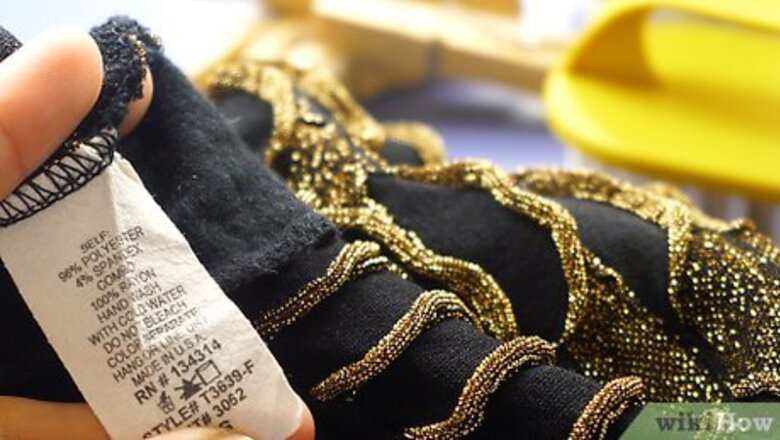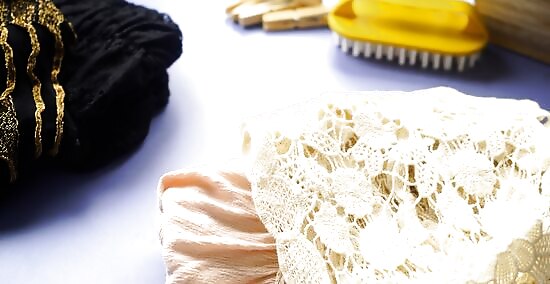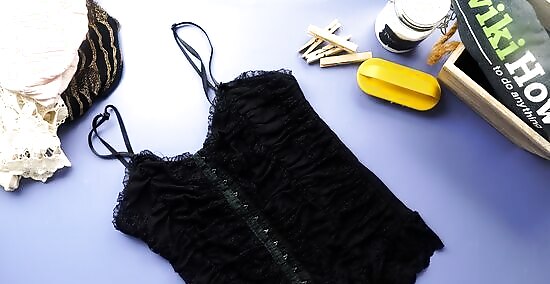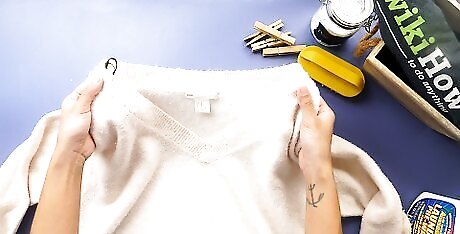
views
Preparing Your Delicates

Check the labels. Before you get started, go through your delicates and read the care instructions. Most delicates will have tags that say "hand wash" or "hand wash only," which means strategic machine washing will still work, but "dry clean only" tags mean the washing machine for those delicates is a definite no-go.

Sort delicates by type. Delicates are fragile and can easily snag, stretch, or lose their shape during washing. To minimize this risk, sort your delicates by type. For example, lace should be washed with lace, cashmere with cashmere, silk with silk, and thin knits with thin knits. Never combine a lace article with a sequined article, for instance, because the sequins might snag the lace.

Organize delicates by color. Just as you do with regular laundry, it is important to also separate delicates by color; wash whites with whites, darks with darks, and colors with colors to prevent bleeding.

Keep delicates fastened. If your delicates have any clips, clasps, zippers, or buttons, be sure to do those up to reduce a chance of snagging or stretching.
Pre-treat stains. Use a pre-wash stain spray or treatment to fight stains before you put your delicates in the washing machine. This will help reduce the amount of work your machine has to do, which reduces the amount of washing stress on your delicates. Grass, dirt, oil-based, and most beverage stains can be pre-treated with dish soap, if you don't have stain spray. For stains on whites, you can use a bleach pen. For blood or body-fluid stains, use cold tap water and light scrubbing as a pre-treatment, followed by a common hand sanitizer to disinfect the garment.
Add small piles of sorted delicates in mesh bags. It’s important not to crowd your delicates. By putting only a few delicates (sorted by type and color) into each mesh bag, you decrease their chances of getting stretched, snagged, or losing their shape. It’s fine to put mesh bags with different types of delicates into the same washing load (the bags will keep them safe from each other), but make sure not to mix colors. For a standard-sized washer, you can wash two to three mesh bags (filled with a few delicates each) at once. If the load is unbalanced, add a few lightly soiled permanent press items, like T-shirts. Also be sure to turn your garments inside out.
Washing Your Delicates

Add detergent. Although mild detergents – like Woolite – or cold-water detergent are designed for washing delicates, they are more expensive. Most regular detergents work just as well, so use what you have on hand. Just be mindful to use the correct detergent based on the colors you are washing.

Select the "pre-soak" option on your washer using mild or cold water. Soaking your delicates before the actual wash is especially important for heavy stains.
Set your washer on a gentle cycle. To wash delicates, you want your washer to be on the shortest, most gentle wash and spin cycles. Most modern washers have a “hand wash” option, which is best for washing delicates. Be sure to use mild or cold water, as this will prevent bleeding and shrinking.
Drying Your Delicates

Air dry your delicates. Dryer heat can ruin your delicates because it can cause shrinkage, so it's best to air dry them. However, if your dryer has a “no heat” and/or “air fluff only” setting, you can toss the mesh bags in the dryer to dry halfway.

Re-shape delicates by hand half-way though the drying process. This is especially important for knits, cashmere, or other snuggly-fitting garments that have a specific shape to them. Water and detergent can temporarily warp these materials and cause them to dry in the shape they are in when taken from the wash if they aren't re-shaped by hand.

Hang or lay delicates flat to finish air drying. Delicates dry best when they are hung over a line or laid flat to air-dry. This helps them keep their original shape intact. Once they are completely dry, it's safe to fold and store your delicates for future wear.


















Comments
0 comment